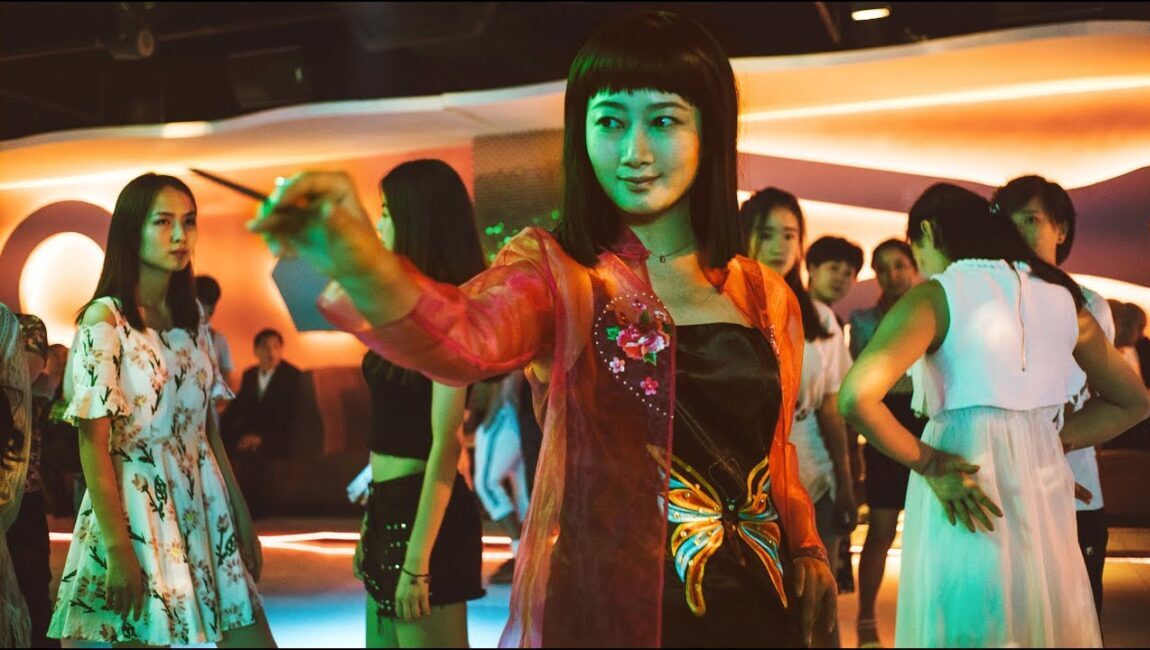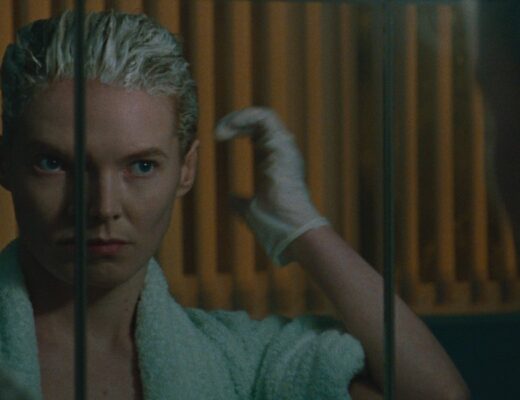Walk Up is Hong Sang-soo’s trickiest film since The Day After (2017), and his most intricately structured effort since The Day He Arrives (2012). With the former, it shares lead actor Kwon Hae-hyo, who here plays a middle-aged director named Byung-soo. With the latter, it shares a marked spatial coherence, focusing its events on a single location, in this case a four-story building owned by Ms. Kim (Lee Hye-young), an interior designer and an old friend of Byung-soo’s. With both films it shares Hong’s keen grasp of character psychology and narrative probability, which allows him to play off structural and temporal gamesmanship as quirks of human behavior, but also, equally, to go the other way, and use psychological insight to motivate absurd story shapes. If The Day After tends more to the former, eventually allowing us to assemble its events into a linear chronology (as when a possibly new iteration of the story is revealed to be a character’s memory lapse), The Day He Arrives tends to the latter, building up a cyclical repetition of events that is nothing short of Borgesian. The remarkable achievement of Walk Up is that Hong manages to accommodate both tendencies within a single film, at once offering a linear, behaviorally coherent chronology and a metaphysical image of simultaneously coexisting presents.
Walk Up begins simply enough, with Byung-soo bringing his daughter Jeong-su (Park Mi-so), a recent graduate and aspiring interior designer, to meet Ms. Kim. They have a meal together, and then go for a brief tour of the building, whose tenants all happen to be out. The first and second floors are occupied by a restaurant whose owner does all the cooking herself. On the third floor is a cozy apartment which Ms. Kim initially thought of using herself, but which she rents out to a couple. On the fourth lives a rather reclusive man who doesn’t pay his rent on time, but who is set to move out shortly. The three then move to the basement, Ms. Kim’s work studio, for a glass of wine. Shortly, Byung-soo is called away to a meeting with a film executive, leaving Jeong-su and Ms. Kim to talk and drink, though he promises to return within the hour. A few bottles of wine later, with Byung-soo nowhere in sight, Jeong-su petitions Ms. Kim to take her on as an assistant. No promises are made, but Ms. Kim doesn’t refuse Jeong-su, either. Finally, the latter leaves to fetch yet another bottle of wine. As she walks down the street away from the building, soft guitar music fills the soundtrack — not for the last time — closing the first of the film’s four parts.
Walk Up’s second section opens with a nondescript view of the same building, where Byung-soo is again met again by Ms. Kim — though this time he is unaccompanied and does not arrive in a car. Conspicuously repeated dialogue immediately suggests formal play; i.e., that this is not a subsequent meeting, but another iteration of the same day with some variations. Byung-soo and Ms. Kim again share a meal, this time on the second floor of the building, where they are joined by the owner (Song Sun-mi), who turns out to be a fan of his work. But when Byung-soo’s daughter comes up in conversation, and Ms. Kim talks about how she had taken her on, only to have her quit within a month of starting, the hypothesis of an alternate storyline fades into the background. The bulk of our attention thus falls on their interactions: Byung-soo’s disappointment at one of his productions falling through; the restauranteur’s two attempts to articulate what she likes about his movies; her sincere, if drunken, expression of her belief in God; and his combative, equally drunken response that religion is simply a human construct; and so on. A few bottles of wine later — a characteristically Hongian ellipsis — Byung-soo goes onto the balcony for a smoke, and the familiar guitar music plays on the soundtrack once more.
Having now acclimated us to this appealing behavioral atmosphere, Hong proceeds to change things up yet again in the film’s third section. We open again at the same building entrance, but with a few more conspicuous changes. We see the restaurant owner driving what we previously saw to be Byung-soo’s car, and when she goes up to the third floor, where the rest of this section takes place, we find that she and Byung-soo are now sharing an apartment, having gotten together in the interim. More specific details of their situation soon emerge: Byung-soo’s deteriorating health and planned career retirement, the restaurant’s declining revenue, and the couple’s financial issues, exacerbated by Ms. Kim’s decision to raise the rent. But other half-forgotten details bubble up from memory and test our ability to assemble the film into a linear chronology: such as the couple who were said to be living there in the first section, whom Byung-soo and Song’s restauranteur seem to have replaced; Ms. Kim’s talk of the reclusive man on the fourth floor, whose bathroom is leaking into what is now their apartment; and talk of Jeju Island, which is now a retirement goal for the two. It remains possible to assemble these details into a linear timeline, but to do so we have to accept a great deal of coincidence — or synchronicity, to use the Jungian term — which underscores, and thereby challenges, our ability to form causal connections from part to part. So when the final section of Walk Up sees Byung-soo now occupying the fourth floor, as if having transformed into the reclusive man whose bathroom needs repairs, our ability to assemble the film into a linear chronology finally gives way.
What all this adds up to is a total vision of Byung-soo’s life from two distinct spatio-temporal perspectives. On the one hand, Walk Up presents his life as existing in linear, chronological time, with the four parts as episodes in a larger trajectory of withdrawal and decline: we see not just his estrangement from the various women in his life, but also his declining health and career, coupled with an increasing reclusiveness. On the other hand, Walk Up allows us to see that single afternoon as a simultaneity of presents, to see the four parts as the same event played out in different ways, and, crucially, unfolded in a kind of empty time, detached from a linear succession of past, present, and future. In the film’s dazzling closing sequence, Hong leaves us suspended between these two alternatives. In so doing, he affirms what his entire career may be said to affirm: that our experience can never be fully reduced to causal mechanisms, and that freedom consists in realizing that we can, in the end, only speak of space and time from the standpoint of the human.
Published as part of NYFF 2022 — Dispatch 2.







